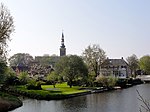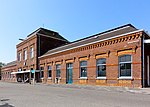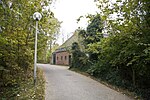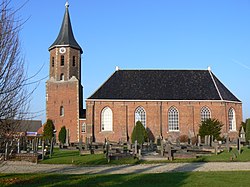Weiwerd
1970s disestablishments in the NetherlandsEemsdeltaFormer populated places in the NetherlandsPages with Dutch IPAPages with Gronings IPA

Weiwerd (Dutch pronunciation: [ˈʋɛiʋərt]; Gronings: Waaiwerd [ˈʋɑːɪ̯ʋət]) is a former village in the Dutch province of Groningen. It is a part of the municipality of Eemsdelta, and lies about 27 km east of Groningen.Formerly a farming community with its own church, school, and shops, the whole village was scheduled for demolition in the 1970s to allow the industrial area of Delfzijl harbour to be expand. Less than 10% of the original buildings are left. The school and the cemetery have remained. The terp (artificial living hill) was supposed to be excavated as well, however protests have prevented its destruction, and the terp is now a protected monument.
Excerpt from the Wikipedia article Weiwerd (License: CC BY-SA 3.0, Authors, Images).Weiwerd
Oosterhorn, Eemsdelta
Geographical coordinates (GPS) Address Nearby Places Show on map
Geographical coordinates (GPS)
| Latitude | Longitude |
|---|---|
| N 53.316666666667 ° | E 6.95 ° |
Address
Oosterhorn
9936 HK Eemsdelta
Groningen, Netherlands
Open on Google Maps










